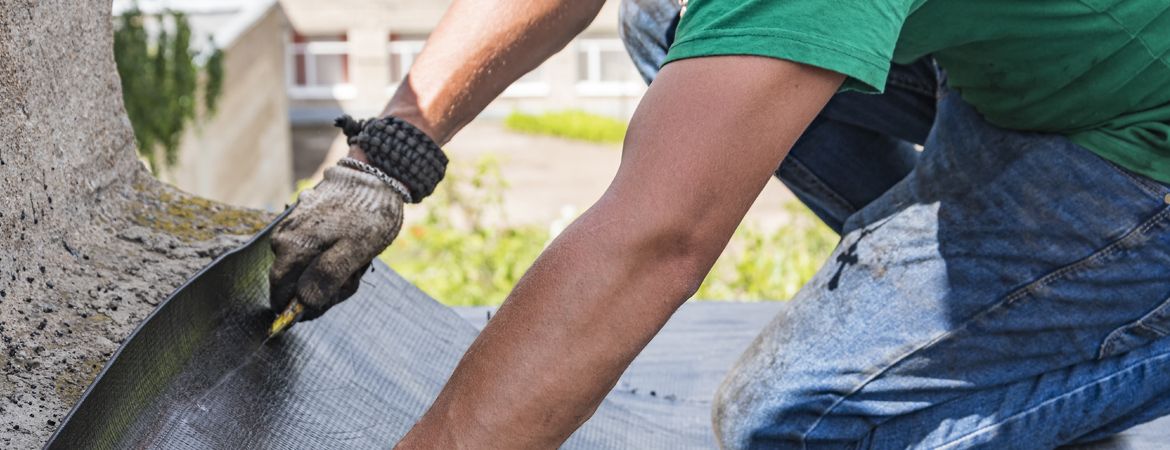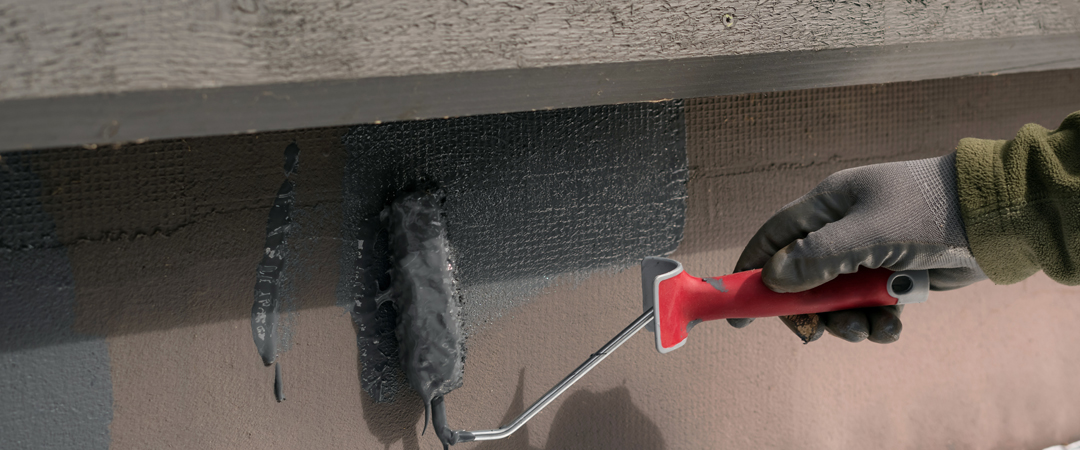
In a world where environmental and economic issues are becoming increasingly prominent, the insulation and waterproofing of our homes have become essential. A well-insulated house means comfort, warmth in winter, and coolness in summer, all while reducing your energy bill. But how can you ensure your living space is both efficient and durable? In this article, we reveal 10 essential tips for optimising your home’s insulation and waterproofing. Whether you’re a homeowner looking to enhance your property or a tenant keen to reduce your energy consumption, these practical tips will help you transform your dwelling into an energy-efficient haven. Prepare to discover simple and accessible solutions that will not only improve your comfort but also your home’s environmental impact. Join us on this journey towards a more sustainable and economical home!
Understanding the Importance of Insulation and Waterproofing
Insulation and waterproofing are two crucial aspects for ensuring the thermal comfort and energy efficiency of your home. Good insulation helps retain heat inside the house in winter and keep it cool in summer. It also plays a key role in reducing thermal bridges—areas where heat easily escapes—which leads to significant energy losses. At the same time, airtightness prevents unwanted air infiltration, which causes uncomfortable draughts and excessive energy consumption.
The importance of these two elements is heightened by current economic and environmental challenges. By reducing energy consumption, you lower your heating and air conditioning bills, while also decreasing your carbon footprint. A well-insulated and airtight home also contributes to the durability of the structure by preventing problems such as damp, mould, and deterioration related to thermal variations. Thus, investing in insulation and waterproofing not only improves your daily comfort but also enhances the value of your property.
Furthermore, good acoustic insulation, which often goes hand in hand with thermal insulation, ensures a calmer and more serene indoor environment. External noises, whether from traffic, neighbours, or bad weather, are reduced, creating a more pleasant living space. In summary, understanding the importance of insulation and waterproofing means recognising the multiple benefits they bring to your quality of life and to the planet.
The Different Types of Insulators Available on the Market
Choosing the right insulator is a crucial step to ensure effective insulation for your home. On the market, you will find a wide variety of insulating materials, each with its own characteristics and advantages. Among the most common are mineral wool insulators, such as glass wool and rock wool, known for their excellent value for money and good thermal and acoustic performance.
Synthetic insulators, such as expanded polystyrene (EPS), extruded polystyrene (XPS), and polyurethane, offer very good thermal insulation and moisture resistance, making them particularly suitable for sensitive areas like basements and roofs. However, their environmental impact is often higher than that of natural or mineral insulators.
Natural insulators, such as sheep’s wool, cork, wood fibre, or hemp, are increasingly popular for their low ecological impact and breathable properties, which contribute to moisture regulation. They are also renewable and biodegradable, making them sustainable choices for environmentally friendly insulation. The choice of insulator will therefore depend on your priorities in terms of performance, cost, and sustainability.
How to Choose the Right Insulation Material for Your Home
Choosing the right insulation material for your home requires considering several essential criteria. Firstly, it’s important to assess the thermal performance of the material, often expressed by the R-value or thermal conductivity (lambda). The higher the R-value, the better the insulation. You will also need to consider the thickness required to achieve the desired level of insulation, depending on the available space in the walls, roof, or floor.
Next, the environmental impact of the material must be taken into account. Natural or recycled materials, such as cellulose wadding or cork, are ecological choices that reduce your carbon footprint. However, they can be more expensive than synthetic insulators. Also, consider the durability and resistance of the material to climatic conditions and pests, to ensure long-lasting insulation.
Finally, cost and ease of installation are determining factors. Some materials require specific installation techniques or particular equipment, which can increase labour costs. Others, such as roll or panel insulators, are simpler to install and may be suitable for DIY installation. In summary, choosing the right insulation material will depend on your priorities in terms of thermal performance, environmental impact, durability, and budget.

Sealing Techniques to Prevent Heat Loss
To prevent heat loss and improve your home’s energy efficiency, it’s essential to apply effective sealing techniques. The first step is to identify the main sources of air leaks, such as windows, doors, ventilation ducts, and junctions between walls and ceilings. Use an air leak detector or perform a blower door test to pinpoint problem areas.
Once leaks are identified, several solutions can be implemented to seal them. Installing weatherstripping around windows and doors is a simple and effective way to prevent air infiltration. Adhesive sealing strips or sealant can also be used to close cracks and gaps. For ventilation ducts, fitting backdraft dampers can help stop outside air from entering the home.
Sealing attics and basements is just as important. Attics, in particular, are often a major source of heat loss. Use sealing membranes and vapour barriers to create an airtight barrier. In basements, apply waterproof coatings to walls and floors to prevent water and air leaks. By combining these techniques, you can significantly improve your home’s airtightness and reduce the need for heating and cooling.
Common Mistakes to Avoid During Insulation
When insulating your home, certain mistakes can reduce the effectiveness of the work and cause long-term issues. One of the most common mistakes is neglecting airtightness. Even with high-quality insulation, air leaks can drastically reduce your home’s thermal performance. Make sure to thoroughly seal all openings and cracks before installing the insulation.
Another frequent error is underestimating the importance of ventilation. A well-insulated home must also be properly ventilated to avoid issues with humidity and indoor air quality. Install mechanical ventilation systems (MVHR) to ensure efficient air renewal without compromising insulation. Remember that excessive humidity can damage insulating materials and encourage mould growth.
Finally, it is crucial to choose the right type of insulation for the specific area. Using unsuitable insulation can lead to poor performance and unnecessary costs. For example, rigid insulation like extruded polystyrene is ideal for basements and external walls, while flexible materials like fibreglass are better suited for lofts and internal walls. Take the time to assess your needs carefully and consult professionals if necessary to avoid these common mistakes.
The Impact of Insulation on Energy Bills
The impact of insulation on energy bills is significant and can result in substantial long-term savings. A well-insulated home requires less energy to heat in winter and cool in summer. By reducing heat loss and air infiltration, you lower the energy consumption of your heating and cooling systems, which is directly reflected in your energy bills.
The savings achieved through good insulation depend on several factors, including your region’s climate, insulation quality, and the efficiency of your heating and cooling systems. On average, effective insulation can reduce heating costs by 20 to 30%, or even more in colder regions. Summer cooling savings can also be considerable, especially in hot areas.
Beyond direct energy savings, good insulation also enhances the value of your property. An energy-efficient home is more attractive to potential buyers and may sell for a higher price. Additionally, energy performance regulations for buildings are becoming increasingly strict, and investing in insulation ensures compliance with these standards while preparing for future legal requirements.

Eco-friendly Solutions for Effective Insulation
Opting for eco-friendly insulation solutions is a wise choice for reducing your environmental impact while improving your home’s energy efficiency. Natural insulating materials, such as sheep’s wool, wood fibre, hemp, and cork, are increasingly popular due to their insulating properties and low carbon footprint. These materials are renewable, biodegradable, and often sourced locally, which minimises their overall environmental impact.
Cellulose wadding, made from recycled paper, is another effective eco-friendly solution. It offers excellent thermal and acoustic performance, while being durable and environmentally friendly. Furthermore, cellulose wadding is resistant to pests and mould, making it a safe and reliable choice for insulating your home. Its blown-in installation also allows for uniform coverage of hard-to-reach spaces, ensuring optimal insulation.
Vacuum insulated panels (VIPs) and aerogel-based insulators are recent innovations that offer exceptional thermal performance with minimal thickness. Although their cost is currently higher than traditional insulators, these solutions represent the future of eco-friendly insulation, reducing bulk while maximising energy efficiency. By choosing eco-friendly solutions, you contribute to environmental preservation while benefiting from high-performance and durable insulation.
The Importance of Ventilation in an Insulated Home
In a well-insulated home, ventilation plays a crucial role in maintaining good indoor air quality and preventing humidity problems. Effective insulation reduces air exchange with the outside, which can lead to an accumulation of pollutants, CO2, and humidity inside the house. Without adequate ventilation, these issues can harm occupants’ health and deteriorate building materials.
Controlled mechanical ventilation (CMV) systems are essential to ensure efficient air renewal. Single-flow CMV extracts stale air from wet rooms (kitchen, bathroom) and introduces fresh air into living areas (bedrooms, lounge). Double-flow CMV, which is more efficient, recovers heat from the extracted air to warm the incoming air, further improving your home’s energy efficiency. These systems help maintain healthy air quality while minimising heat loss.
In addition to CMV, it is important to ensure good humidity management. Dehumidifiers can be used in particularly damp areas, such as basements, to prevent mould growth and deterioration of insulating materials. Good ventilation and adequate humidity management ensure a healthy and comfortable indoor environment, while preserving the integrity and effectiveness of your insulation.

Conclusion: Investing in Insulation for a Sustainable Future
Investing in your home’s insulation and airtightness is a crucial step to improve your comfort, reduce your energy bills, and help protect the environment. A well-insulated home means thermal comfort in all seasons, substantial savings on heating and air conditioning costs, and a smaller carbon footprint. By choosing high-performance and eco-friendly insulating materials, you contribute to the preservation of natural resources and the fight against climate change.
Airtightness techniques maximise insulation performance by preventing air infiltration and heat loss. Good ventilation is also essential to maintain healthy indoor air quality and prevent humidity problems. By avoiding common installation mistakes and choosing the right insulation material, you ensure the longevity and effectiveness of your work.
Finally, the numerous financial aids available make insulation projects more accessible and cost-effective. By benefiting from grants, tax credits, and interest-free loans, you can reduce the cost of your work and make a wise investment for the future. In summary, investing in your home’s insulation and airtightness is a winning choice for your comfort, your wallet, and the planet. Transform your house into an energy-efficient and sustainable haven today!

